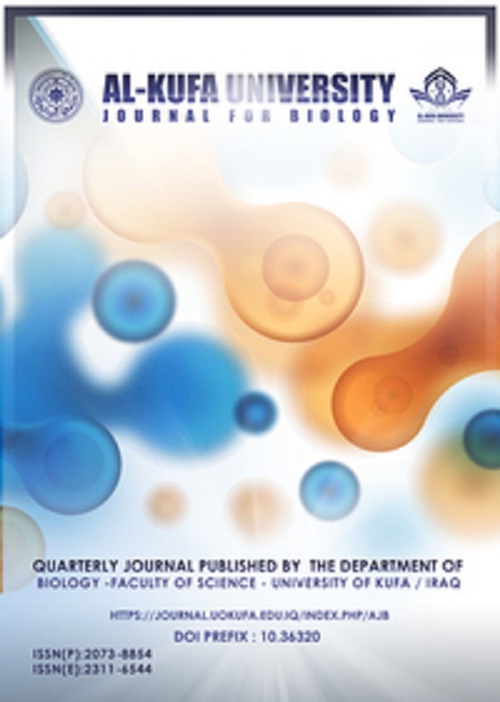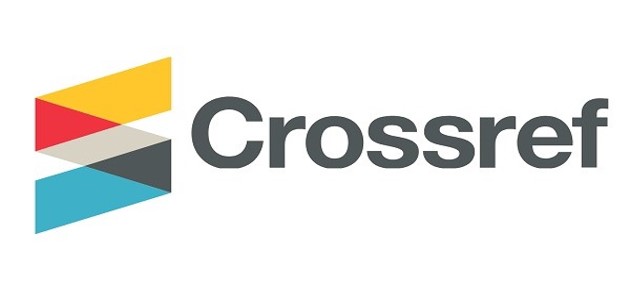GC-MS analysis and anti-bacterial activity of Lantana camara extracts from Iraq
DOI:
https://doi.org/10.36320/ajb/v15.i2.11985Keywords:
Lantana camara, GC/MS, n-Hexane extract, Ethanolic extract, Methanolic extractAbstract
Scientists from all over the world are currently investigating medicinal plants. Plants have long been used as a source of medicine by humans due to their low cost and long history of use. Due to technological limitations, most traditional medicines in the past were derived from plants. Lantana camara belongs to the Verbenaceae family of plants. In this study, the antibacterial and phytochemical properties of Lantana camara extracts from Iraq were analyzed. The extract composition was analyzed using GC/MS. using the agar well diffusion method and broth dilution assay to evaluate the antimicrobial activity of each extract. The aerial parts of the Lantana camara herb were extracted with n-hexane, then ethanol, and finally methanol. The beneficial phytochemicals found in L. camara include triterpenoids, flavonoids, alkaloids, saponins, steroids, and tannins. This article will be useful for researchers studying the biological activity, phytochemical composition, and antibacterial activity of Lantana camara.
Downloads
References
DOLATKHAHI, Mehdi; DOLATKHAHI, Ali; NEJAD, Javad Bagher. Ethnobotanical study of medicinal plants used in Arjan–Parishan protected area in Fars Province of Iran. Avicenna journal of phytomedicine, 2014, 4.6: 402.
ZHANG, X. Regulatory Situation of Herbal Medicines a worldwide Review. Traditional Medicine Programme. World Health Organization, WHO/TRM/98.1, 1998.
WORLD HEALTH ORGANIZATION, et al. WHO traditional medicine strategy: 2014-2023. World Health Organization, 2013.
ORAIBI, Amjad I.; ABDULHAMZA, Hayder M. Chemical profiling of nonpolar compounds of Onopardum acanthium using GCMASS. Pharmacognosy Journal, 2022, 14.6s.
A. E. Al-Snafi, “Chemical constituents and pharmacological activities of Lantana camara-A review,” Asian J Pharm Clin Res, vol. 12912, pp. 10–20, 2019.
J. Benites et al., “Composition and biological activity of the essential oil of Peruvian Lantana camara,” J. Chil. Chem. Soc., vol. 54, no. 4, pp. 379–384, 2009.
PRIYA, Charles Lekhya, et al. Antioxidant activity of Achyranthes aspera Linn stem extracts. Pharmacologyonline, 2010, 2.2: 228-237.
KENSA, V. M. Studies on phytochemical screening and antibacterial activities of Lantana camara Linn. Plant Sciences Feed, 2011, 1.5: 74-79.
KALITA, Sanjeeb, et al. Phytochemical composition and in vitro hemolytic activity of Lantana camara L.(Verbenaceae) leaves. Pharmacology online, 2011, 1: 59-67.
SAXENA, Mamta; SAXENA, Jyoti; KHARE, Sarita. A brief review on: Therapeutical values of Lantana camara plant. International journal of pharmacy & life sciences, 2012, 3.3.
BHAKTA, Deepita; GANJEWALA, Deepak. Effect of leaf positions on total phenolics, flavonoids and proanthocyanidins content and antioxidant activities in Lantana camara (L). Journal of scientific Research, 2009, 1.2: 363-369.
JANARDHAN, Bhore Subhash; VIJAYAN, Komathi. Types of endophytic bacteria associated with traditional medicinal plant Lantana camara Linn. Pharmacognosy Journal, 2012, 4.32: 20-23.
GIDWANI, B. K., et al. Analgesic, anti–inflammatory and anti–hemorrhoidal activity of aqueous extract of Lantana camara Linn. Research Journal of Pharmacy and Technology, 2009, 2.2: 378-381.
THAMOTHARAN, G., et al. Antiulcerogenic effects of Lantana camara Linn. leaves On in vivo test models in rats. Asian journal of pharmaceutical and clinical research, 2010, 3.3: 57-60.
MAYEE, R.; THOSAR, A. Evaluation of Lantana camara Linn.(Verbenaceae) for antiurolithiatic and antioxidant activities in rats. International journal of pharmaceutical and clinical research, 2011, 3.1: 10-14.
GANESH, T., et al. Pharmacognostic and anti-hyperglycemic evaluation of Lantana camara (L.) var. aculeate leaves in alloxan-induced hyperglycemic rats. Int J Res Pharm Sci, 2010, 1.3: 247-252.
GANJEWALA, Deepak, et al. Biochemical compositions and antibacterial activities of Lantana camara plants with yellow, lavender, red and white flowers. EurAsian Journal of BioSciences, 2009, 3.10: 69-77.
BARRETO, F. S., et al. Antibacterial activity of Lantana camara linn lantana montevidensis brig extracts from cariri-ceara, Brazil. Journal of young pharmacists, 2010, 2.1: 42-44.
POUR, Badakhshan Mahdi, et al. A comparative study: antimicrobial activity of methanol extracts of Lantana camara various parts. Pharmacognosy Research, 2009, 1.6.
SRIVASTAVA, Deepika; SINGH, Padma. Antifungal Potential of Two Common Weeds Against Plant Pathogenic Fungi-sps. Alternaria.
RIPATHI, Sadhna, et al. Potential of Lantana camara Linn. weed against wood destroying fungi. Indian Forester, 2009, 135.3: 403.
PANDEY, Amita; TRIPATHI, Shalini. Concept of standardization, extraction and pre phytochemical screening strategies for herbal drug. Journal of Pharmacognosy and Phytochemistry, 2014, 2.5: 115-119.
SIMORANGKIR, Murniaty; NAINGGOLAN, Bajoka; SILABAN, Saronom. Secondary metabolites phytochemical analysis of n-Hexane, ethyl acetate and ethanol extracts of Sarang banua (Clerodendrum fragrans Vent Willd) leaves. In: AISTSSE 2018: Proceedings of The 5th Annual International Seminar on Trends in Science and Science Education, AISTSSE 2018, 18-19 October 2018, Medan, Indonesia. European Alliance for Innovation, 2019. p. 461.
KHAN, Barkat Ali, et al. Investigation of the effects of extraction solvent/technique on the antioxidant activity of Cassia fistula L. Journal of Medicinal Plants Research, 2012, 6.3: 500-503.
INGLE, Krishnananda P., et al. Phytochemicals: Extraction methods, identification and detection of bioactive compounds from plant extracts. Journal of Pharmacognosy and Phytochemistry, 2017, 6.1: 32-36.
BAUER, A. W. Antibiotic susceptibility testing by a standardized single diffusion method. Am. J. Clin. Pathol., 1966, 45: 493-496.
SEOL, Geun Hee; KIM, Ka Young. Eucalyptol and its role in chronic diseases. Drug discovery from mother nature, 2016, 389-398.
ÜRKEZ, Hasan; CELIK, Kübra; TOĞAR, Başak. Effects of copaene, a tricyclic sesquiterpene, on human lymphocytes cells in vitro. Cytotechnology, 2014, 66: 597-603.
ROKADE, Y. B.; SAYYED, R. Z. Naphthalene derivatives: a new range of antimicrobial agents with high therapeutic value. ChemInform, 2011, 42.21: no-no.
DAHHAM, Saad S., et al. The anticancer, antioxidant and antimicrobial properties of the sesquiterpene β-caryophyllene from the essential oil of Aquilaria crassna. Molecules, 2015, 20.7: 11808-11829.
FRANCOMANO, Fabrizio, et al. β-Caryophyllene: a sesquiterpene with countless biological properties. Applied Sciences, 2019, 9.24: 5420.
RAMAN, B. Venkata, et al. Antibacterial, antioxidant activity and GC-MS analysis of Eupatorium odoratum. Asian J Pharm Clin Res, 2012, 5.2: 99-106.
SINGH, Surender, et al. Evaluation of anti-inflammatory activity of plant lipids containing⍺–linolenic acid. 2008.
YEUNG, Andy Wai Kan, et al. Resveratrol, a popular dietary supplement for human and animal health: Quantitative research literature analysis-a review. Animal Science Papers and Reports, 2019, 37.2: 103-118.
MOHAMMED, Hamdoon A., et al. Phytochemical characterization, in vitro anti-inflammatory, anti-diabetic, and cytotoxic activities of the edible aromatic plant; Pulicaria jaubertii. Molecules, 2021, 26.1: 203..
SIANIPAR, Nesti Fronika; PURNAMANINGSIH, Ragapadmi. Enhancement of the contents of anticancer bioactive compounds in mutant clones of rodent tuber (Typhonium flagelliforme Lodd.) based on GC-MS analysis. Pertanika Journal of Tropical Agricultural Science, 2018, 41.1.
JIANG, Qing. Natural forms of vitamin E: metabolism, antioxidant, and anti-inflammatory activities and their role in disease prevention and therapy. Free Radical Biology and Medicine, 2014, 72: 76-90.
KAREN CARDOSO, Bruna, et al. Antioxidant activity of α and β-amyrin isolated from Myrcianthes pungens leaves. Natural product research, 2020, 34.12: 1777-1781.
DO NASCIMENTO, Kamilla Felipe, et al. Antioxidant, anti-inflammatory, antiproliferative and antimycobacterial activities of the essential oil of Psidium guineense Sw. and spathulenol. Journal of ethnopharmacology, 2018, 210: 351-358.
BANDYOPADHYAY, Debabrata. Topical treatment of melasma. Indian journal of dermatology, 2009, 54.4: 303..
RUBAB, Momna, et al. Bioactive Potential of 2-Methoxy-4-vinylphenol and Benzofuran from Brassica oleracea L. var. capitate f, rubra (Red Cabbage) on Oxidative and Microbiological Stability of Beef Meat. Foods, 2020, 9.5: 568.
ALQAHTANI, Fulwah Yahya, et al. Chemical composition and antimicrobial, antioxidant, and anti-inflammatory activities of Lepidium sativum seed oil. Saudi journal of biological sciences, 2019, 26.5: 1089-1092.
SHEELA, D., et al. GC-MS analysis of bioactive constituents from coastal sand dune taxon-Sesuvium portulacastrum (L.). Bioscience discovery, 2013, 4.1: 47-53.
SHAHWANY, A. W.; TAWFEEQ, Heba K.; HAMED, Shahad E. Antibacterial and anti-biofilm activity of three phenolic plant extracts and silver nanoparticles on Staphylococcus aureus and Klebsiella pneumoniae. J Biomed Biotechnol, 2016, 4: 12-18.
Downloads
Published
How to Cite
Issue
Section
License
Copyright (c) 2023 Ali Osamah Abdulrazzaq Al-Itbi, Turgumbayeva Aknur

This work is licensed under a Creative Commons Attribution 4.0 International License.
which allows users to copy, create extracts, abstracts, and new works from the Article, alter and revise the Article, and make commercial use of the Article (including reuse and/or resale of the Article by commercial entities), provided the user gives appropriate credit (with a link to the formal publication through the relevant DOI), provides a link to the license, indicates if changes were made and the licensor is not represented as endorsing the use made of the work.












